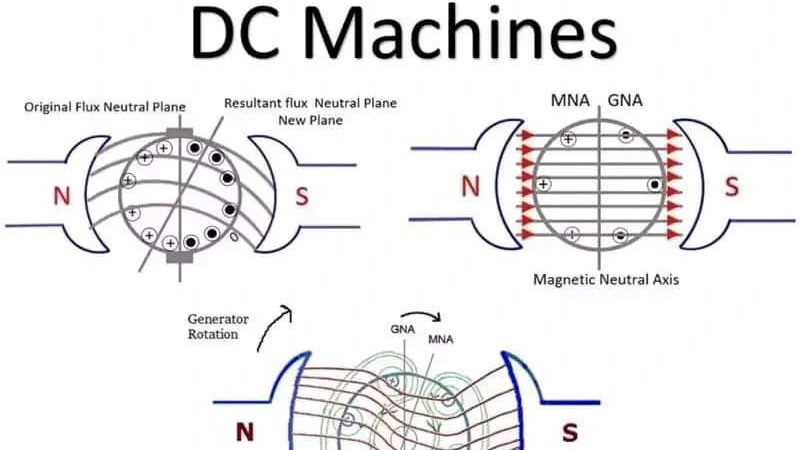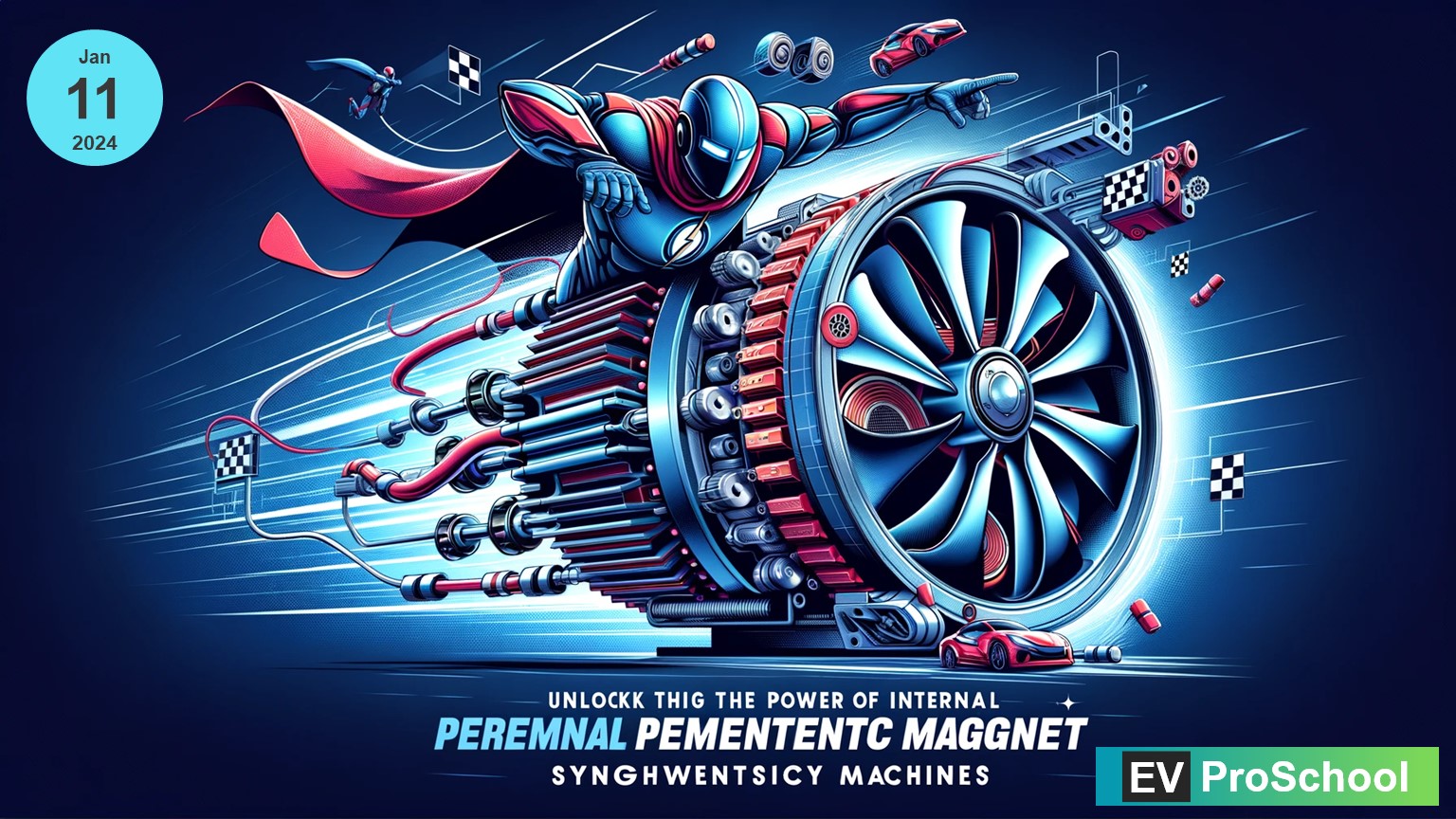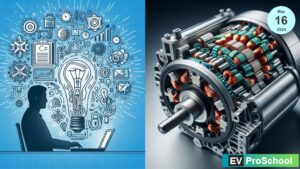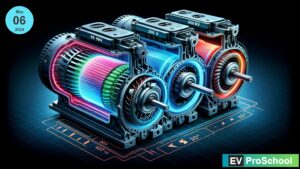In the world of electric machines, there’s a superhero known as the Internal Permanent Magnet Synchronous Machine (IPM). Let’s dive into its characteristics and uncover the magic that makes it special.
1. Robust and Speedy Operation:
Imagine your regular fan slowing down when you put your hand against the blades. That’s what happens in some machines. But not in the IPM! It’s robust, like a superhero in action. This allows it to spin at much higher speeds without breaking a sweat.
2. The Air Gap Secret:
Now, think of the air gap as the space between your hands when you clap. In the IPM, this gap isn’t the same in all directions. It’s like having more room for your hand to move sideways than up and down. In technical terms, the effective air gap on the direct axis is larger than on the quadrature axis (we call it Ldm < Lqm). This makes our machine a bit like a salient pole, which is a fancy way of saying it has a preferred direction.
3. Armature Reaction Takes the Stage:
In an Internal Permanent Magnet Synchronous Motor (IPMSM), armature reaction refers to the effect of the magnetic flux produced by the stator (armature) current on the magnetic field generated by the rotor’s permanent magnets. Though IPMSMs do not have the same commutation challenges as DC machines, armature reaction still plays a significant role in the motor’s performance.
The armature reaction impacts the distribution of the magnetic field inside the motor, which can affect torque production, efficiency, and smooth operation. There are two key effects of armature reaction in an IPMSM:
Demagnetization Effect:
The magnetic field produced by the stator’s current can weaken the magnetic flux generated by the rotor’s permanent magnets. This demagnetizing effect can reduce the overall torque output and efficiency of the motor.
Cross Magnetization Effect:
The stator’s magnetic field may distort the rotor’s magnetic field, leading to a misalignment of the torque-producing elements. This cross-magnetization effect can result in torque ripples, increased noise, and vibrations, ultimately affecting the smooth performance of the motor.
You can compare the Armature reaction of IPM motor with Armature reaction of DC Machines. Below is the explanation for DC.

4. Auxiliary time sweep
An auxiliary time sweep allows us to study key properties of an Internal Permanent Magnet Synchronous Motor (IPMSM) without doing a full, time-consuming transient analysis. In simple terms, this method moves the rotor to a specific position, performs an analysis, and then moves it to the next position. This helps us investigate things like torque ripples, rotor skewing, and the best combination of mechanical and electrical angles. We can even explore iron losses using models like Steinmetz and Bertotti, although it requires a bit more effort since we’re not doing a full transient analysis. Additionally, we can verify the results by comparing them with measurements or simpler models like 2D or 2.5D.

We can test all the parts of the model for how well they work before moving to a full transient analysis. This includes checking sliding meshes, electric currents, magnetic fields, and complex materials. The model even supports special materials and has built-in methods for analyzing torque and coupling the electric circuits with the motor.

When we eventually move to full transient analysis, we’ll be able to study more detailed effects, such as inertia, eddy currents in the rotor, and how electromagnetic forces interact with the motor’s parts. However, setting up the solver for this will require balancing accuracy with computational efficiency, meaning we’ll need to optimize resources. By building and testing the model step by step, we can ensure each part works correctly before moving to the next stage.

Conclusion:
In simpler terms, the IPM is like the race car of electric machines. It’s built for speed, handles twists and turns gracefully, and has some cool moves up its sleeve (thanks to that unique air gap). So, the next time you hear about Internal Permanent Magnet Synchronous Machines, remember, it’s not just a machine; it’s a superhero in the world of electrifying performances!



